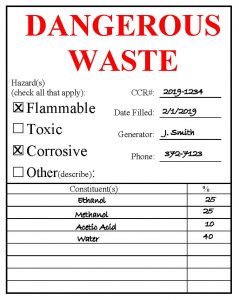Each department and individual who generates hazardous wastes is responsible for ensuring that those wastes are accumulated, stored, and disposed of in a safe and legal manner.
The procedures below will help generators in identifying requirements applicable to their wastes. Any generator can also contact EHS at 372-7163 for assistance.
In order to properly manage their wastes, generators must be familiar with requirements for:
- Waste containers
- Waste container labeling
- Satellite Accumulation
- Reporting Wastes for Disposal





